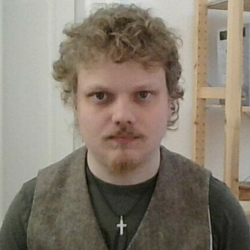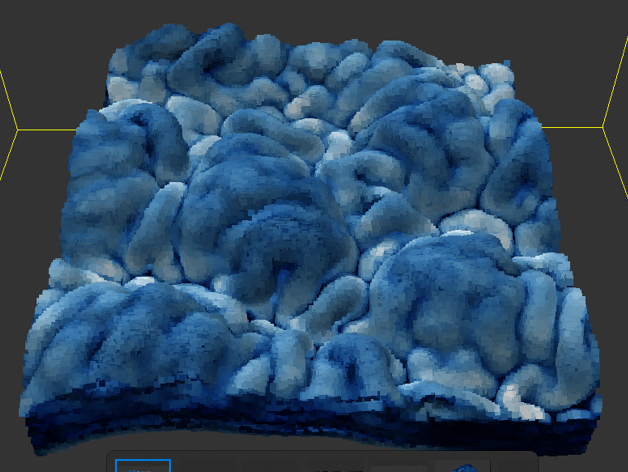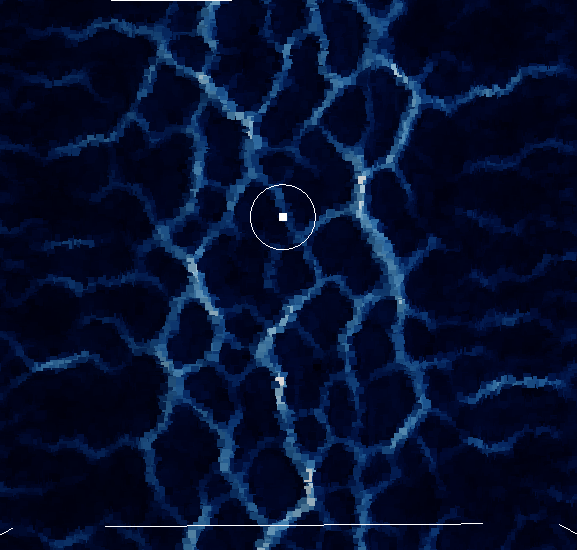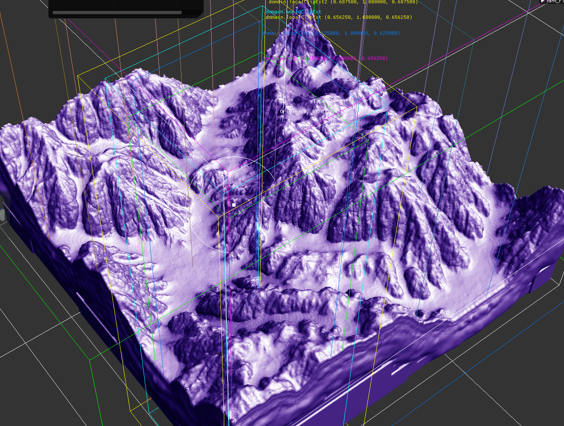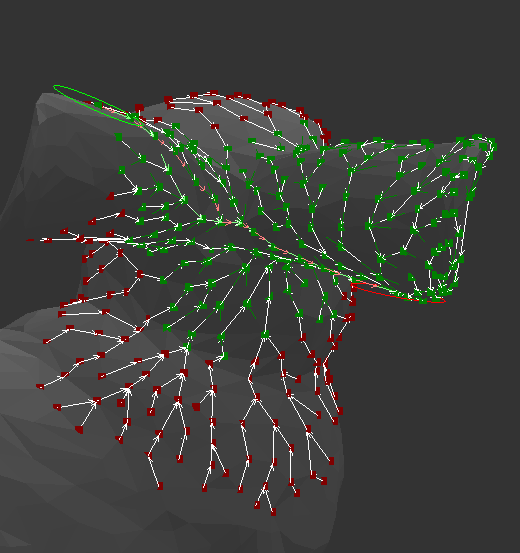JoeJ said:
I'm the same. Going farther, i do not even care about ‘playing a game’ that much. All i want is the other world. To give it some sense and a purpose, let's make a game out of it. But that's the secondary objective, not the first.
I fully agree. Books are not read because you want to read; you want to experience that other, more exciting world that is playing out inside the book. Computer games have a huge potential here that vastly surpasses books IMO. There are several key challenges, though:
- Meaning of that world. Differerent genres have this problem in different ways.
- Procedurally generated worlds of “replayable” games quickly detract from any single world's meaning, because they are all usually easily (i.e., without effort on the player side) replaceable and no world seems truly unique in a meaningful way, and even the part about having each world be a new territory to explore is kind of false, since I never saw procedural generation that made the world itself interesting and mysterious. In minecraft, no place in the map seems more meaningful than any other, despite maybe aesthetic appeal, and all you're doing is scouring it for resources, not actually exploring its mysteries. That said, I'm still a big proponent of procedural generation. Maybe the problem is that procedurally generated worlds usually come without any lore or personality, and they're too easy to explore and generate. The player is not forced to stick to any single world and can roll the dice until he gets what he “wants”, but that strongly devalues each individual world. I want the richness that approaches that of a novel's world, but with me being an active part of the story. Maybe dwarf fortress goes somewhere in that ballpark, I never got into it, though, so I don't know.
- MMO games struggle to make the world meaningful to anyone, because usually, everyone either plays in his own copy of that world while not in an outpost, doing the exact same storyline, saving a world that thousands of others already saved, defeating enemies that have already been killed thousands of times. MMO game worlds often are inconsistent between players due to individual game progress. So while those games often have a world with lots of lore, even if often bland, the player subconsciously feels distanced from it because everyone else around him in that world experiences different points in its storyline currently. He knows that only he can see his own playthrough. It would be better for such games to be entirely singleplayer, if we only look at the immersion aspects. I still think that MMOs are important because we also want a sense of hanging out with other likeminded people and having fun together in that other world.
- Sandbox games have the opposite problem: everyone lives in the same persistent world, but the entire focus of those games are player interactions with each other or with the world, not the world itself. A literal sandbox is great for little kids. But adults need more intellectual stimulation that a pile of boxed-in sand. All sandbox worlds I know of are virtually dead, because they only serve as a vehicle for the mechanics and gameplay loop.
- Exploration of a world often feels meaningless.
- If exploring itself is not difficult, i.e., if you're not bound to wherever you are by various constraints, then exploration is meaningless. Exploration needs a clearly known and unknown part of the world, because “venturing into the unknown” has no meaning if you never stay in one place and there is no “homeland” to come back to. All you're doing is wandering and looking at scenery at this point; passing through. Exploration and adventure are about facing risks and danger and going out of the comfort zone to experience new, interesting things. Accessibility kills mystery. Just like in science or engineering, it's actually really hard to explore new ideas, because it's hard to come up with new ideas. If everything was trivial, then exploring new ideas would simply be a matter of picking a direction and doing an exhaustive traversal of the idea space. No idea would be more special than any other. Similarly, in game worlds, no place is really more special than any other if exploration is easy. The steroids version of this is fast travel. Yes, it makes it more bearable, but the journey is an integral part of adventure.
- Many games do not have interesting things to explore, as the world often serves as a vehicle for power progression and content for the game loop. Everything you find, you can immediately tell how it interacts with game mechanics, and that's the only reason it is there. You find some resource deposit, or maybe some thing that will unlock some ability, or a bandit outpost, a trading outpost, a dungeon, etc.. You can interact with those through the game loop, and once you did, the entire location loses its appeal. If exploring itself is not difficult, i.e., if you're not bound to wherever you are by various constraints, then exploration is meaningless. Exploration needs a clearly known and unknown part of the world. The scenery itself does not even register to the player besides maybe being nice to look at, because the player cannot do anything with it, and it does not feel real despite looking realistic. When I go climb up the small mountain where I live, and enter the mountain forest, it's exhausting to climb and I never know where a boar might pop up. The forest seems huge because it's hard to traverse, and because I don't want to stray off the trodden path too much, it always keeps its mystery. In a game, such a forest would offer no barriers, be easy to traverse, and offer you no sense of apprehension.
- Often, game worlds are too filled with “points of interest” that these get very repetitive and ubiquitous. Exploration should probably be 99% survival and 1% exciting finds. You have to tweak those numbers depending on the case. If I find an abandoned castle, a hermit, a bandit lair, or a mine every 10 minutes, they each become a casual, forgettable thing. And those finds are usually completely isolated from everything else and more like a little self-contained sidegame. Exploration is not about finding a story vehicle. It's about finding an opportunity to make story yourself.
- Most worlds are dead.
- Most games do not make you interact with the land. In the real world, you have to raise cattle and crops, build houses, find resources for industry. Real life is really harsh, but that's what gives a lot of meaning to good lands. People fought to the death over the chance to live in a region that has good soil and enough water. They want a good source of wood and other construction materials. They want iron ore so they can have nice tools. In a game world, none of these considerations really exist, besides in strategy games. In games, there are no people trying to settle in a good piece of land, or struggling with bad soil. In game worlds, people have no struggle to survive besides facing monsters.
- Most games have no actual problems in their game world. People don't hate each other, lands aren't ravaged by war, economies don't crumble, there are no droughts and famines, people don't get sick, and have no culture, identity, or opinions, fears, or struggles. Even wars don't really kill people there. You just become part of one big battle and that's it. Maybe the flags change and the king gets replaced. You don't need utra-realism where you need to pee, and you don't need fully realistic personalities for NPCs or AI generated dialogues. All you need is a game where events affect people and environments, and people depend on their surroundings, and on each other. The player just needs convincing enough cues that lets him keep his suspension of disbelief / his immersion that this is in fact a real world, not a realistic world. Realness is not realism.
Coming this far, I think that what I'm looking for is not even a specific game genre. Or maybe it's an entirely new genre. An actual adventure world game (not to be confused with an adventure game, because I would not consider a linear story game to fit this genre). The mechanics should enhance the fun of the world, giving it an interesting twist. It doesn't matter whether I adventure through that world in first person and a gun, or third person and a sword and wand. Because if I just want a specific type of combat game, I can just play whatever is out there already. There is lots of variation of settings for each set of mechanics / game loop. But there rarely is a world that feels alive, meaningful, mysterious, captivating.
I think the ideal adventure world game is an MMO, with a procedurally generated world, and where you as a player are not central to the world. You are just someone trying to get by, having his own adventure. And the game should not be about individual high scores, but about progressing together.
For example imagine an MMORPG without cities, and you have to base-build your own outposts and towns together, let the NPCs settle in and defend your outpost. And NPCs don't just transmute gold that fell out of a boar's stomach into items, but depend on resources in the surroundings to craft things. And as the outpost grows, better crafting techniques or better gear becomes available. And if high-level craftsman NPCs die, the entire economy may regress and lose access to a certain technology (such as gunsmithing). Basically a civilisation game but bottom-up instead of top-down, with emergent civilisation building. Perma-death can help intensify the meaning of the world and the social experience, as the player character itself loses all relevance on death, and you need to start with a new character. But you don't start from scratch, because the progress of the game is measured by collective progress: establishing and sophistication of a town/city, tapped resources, craftsmanship/technology research expertise, collective economic and combat prowess. Only when everyone dies and your city is burned down, you really start over from scratch.
Such a game of course needs a lot more sophistication in its design that that short description, but you hopefully get the idea. A game that is about its world, and if multiplayer, about cooperation. I think that this is also the required basis for role playing. You can also make similar single-player games and in various settings, such as fallout-style scenarios, medieval scenarios, fantasy, or even sci-fi colonisation games, whether first-person or third-person.
JoeJ said:
I wonder if this is a kind of typical programmer mentality, and game designers might actually hate this way of thinking. : )
I think this is the dream that was sold to us in MMORPGs. But no game ever delivered on that promise. You can see evidence of that implicit promise in all those “Player gets sucked into MMORPG world” type stories out there. People want to interact with a real (not realistic) world, and maybe this craving is because our actual lives are basically fake. Almost nobody has a job that is essential for anything, your performance at your job doesn't really affect anybody, because the fight for survival has been solved by the massive farming industry, you live your life in your office and in your apartment, you don't own and cultivate land, if you live in a city, you don't know your neighbours, etc. And most gamer and especially programmer types probably don't have a family, either.
Another world offers you what you know you need to stay sane but cannot have in this world. It's a vehicle for friendship (if MMO), for relaxing and taking a break from a tormenting life, and to recover.
krumpet291 said:
If it's an overly broad use of the term “FPS” to include games like those mentioned above, then this is fine. We can call those games something else. As for how to innovate an FPS, then I guess the question to OP would be whether moving beyond the bounds of “FPS” is something they had in mind, or whether they want innovate while still sticking to the definitions of what an FPS is.
I would call pure FPSs like Doom action shooters or action FPS. Because it's all about the action of the combat, which happens by shooting. I would not call the broader range of FPSs action shooters. But I don't think naming a genre after its core gameplay loop is that great, because it will trick others into only seeing the mechanical side of the game. Although I guess it is fitting for games like doom, because they actually are only about their mechanics.
Wow, this post took me well over an hour to write. The game I pitched above is actually something I've been pondering on for 2 years now. But I had not fully realised the importance of the game world until today, the whole thing was initially an attempt to make MMORPGs feel more satisfying (by giving the player more freedom, such as customisable ability parameters (such as charge up time of a spell, rate of fire vs. damage vs. range vs. cost, etc.), or even modular ability creation, a more sophisticated stats system that is really expressive as opposed to STR-INT-AGI), then it morphed into trying to fix MMORPGs and give them back the social aspect and make them less about yourself. I started that design mechanics-first, and then about the player experience, but now I can see that the vision was missing its world-first focus. Back to the drawing board. All the earlier ideas I had are probably fully compatible with all the new focus, though.
